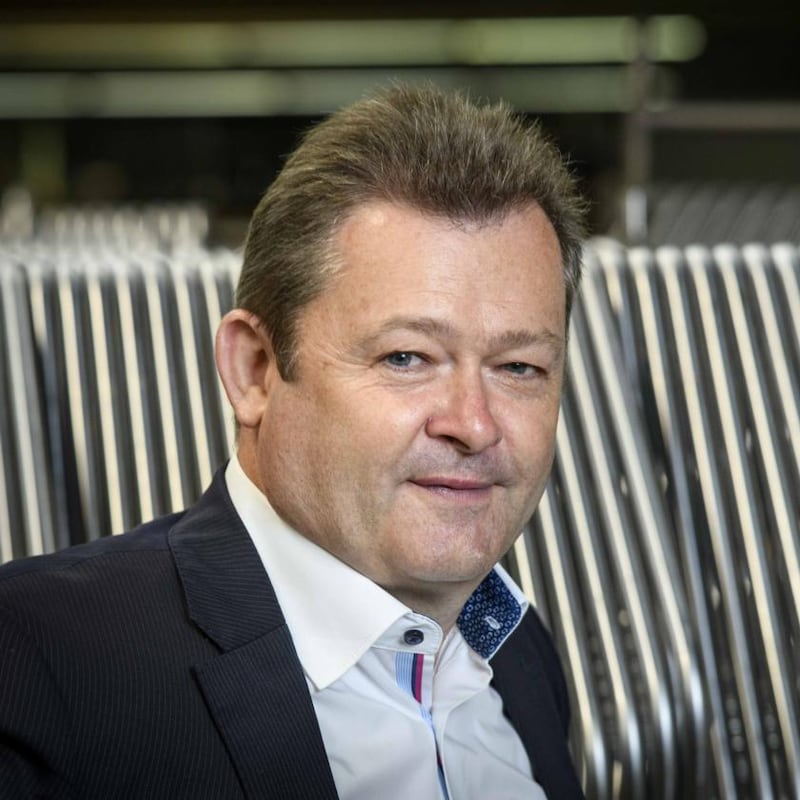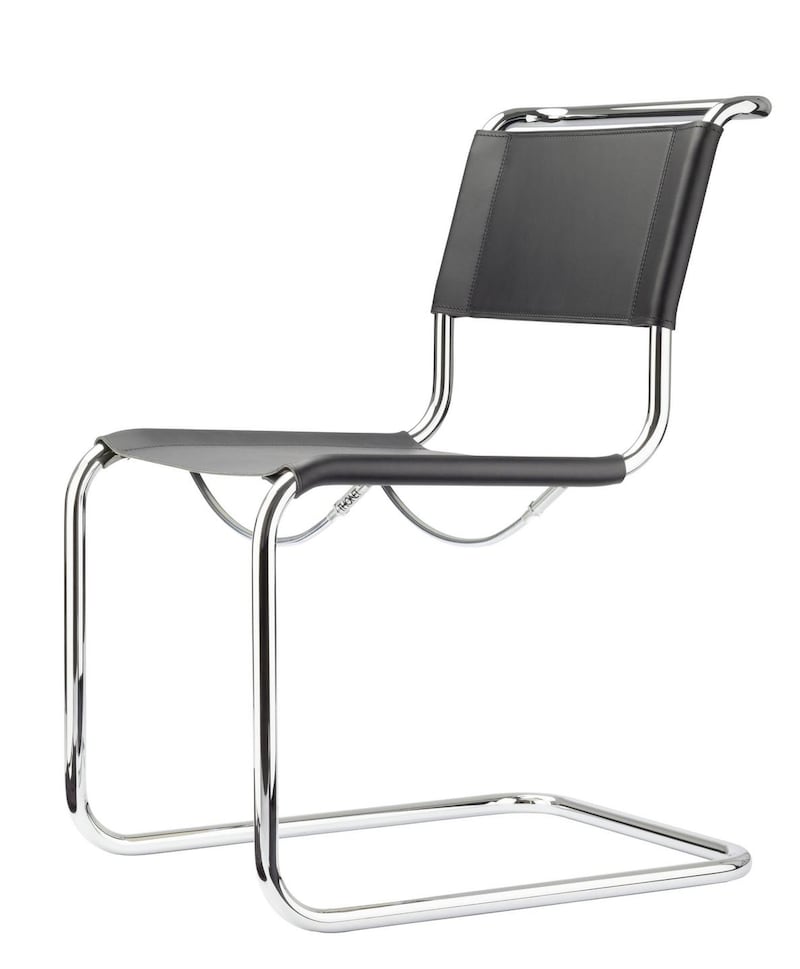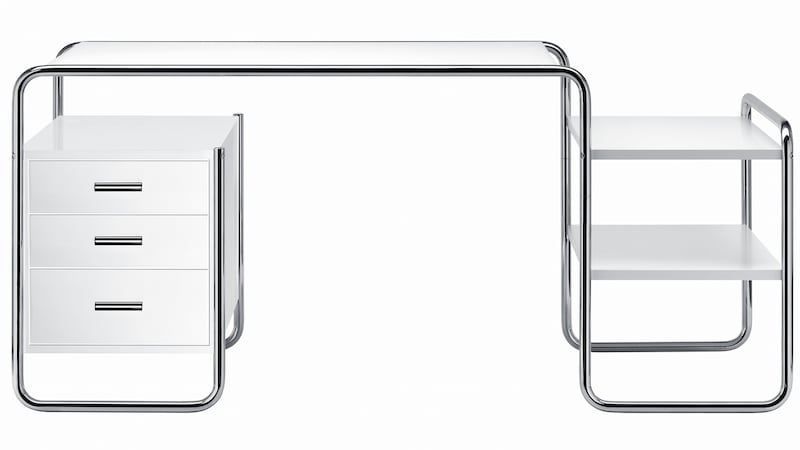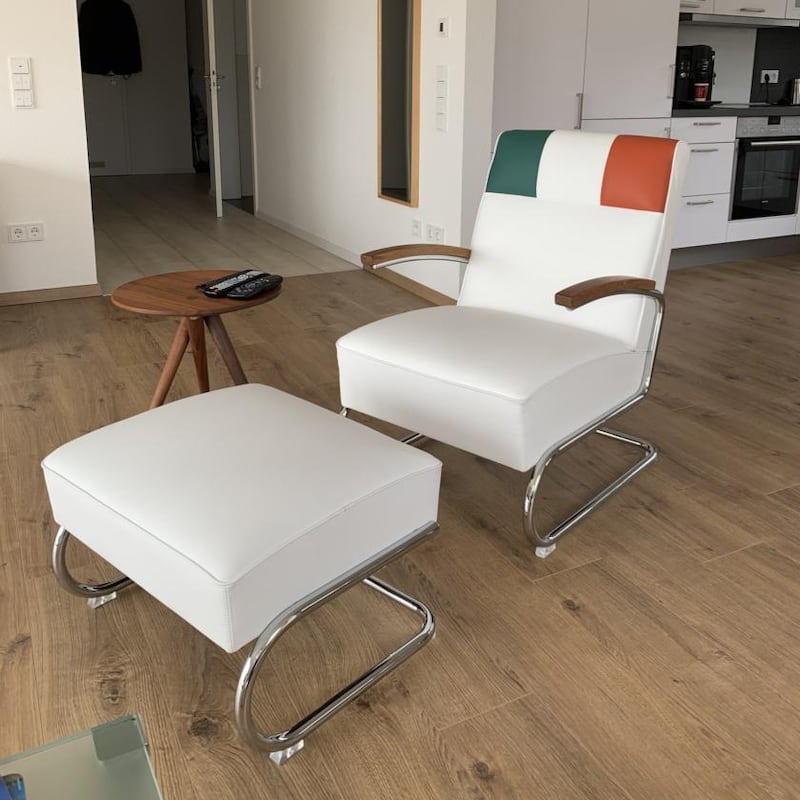Thonet’s furniture designs are known all over the world and immortalised in museums and movies, but not many people know that an Irish man is at the helm of the historic German company.
Charlie Chaplin and Billy Wilder used Thonet chairs in their films, Picasso was photographed on a Thonet rocking chair, and the designs, or their imitations, have popped up in films ranging from Cabaret to Poltergeist. The furniture manufacturer has sold more than 50 million of its most famous design – the Vienna coffee house chair.
When Brian Boyd got the offer to be chief executive of the company five years ago, he did not think twice about it. It was "the chance of a lifetime", he says.
“If you talk to anybody in the furniture industry, especially people interested in design and architecture, there is nobody who doesn’t know Thonet. It is what enticed me to the company, definitely.”

From Maynooth, Co Kildare, a student exchange brought him to Germany for a year. It included a three-month work placement and, having watched his father develop his Maynooth Office Supplies business, he opted for an office furniture company. He met his future wife, Britta, during his German exchange and when it came to a job after college, he gravitated towards Germany and the furniture business. He never left.
Thonet’s history dates to 1819 and he believes it is Europe’s oldest, and possibly the world’s oldest, furniture manufacturer.
“We don’t know anyone who is older,” he says. “We’re part of Germany’s and maybe even Europe’s design and cultural history.”
You cannot talk about Thonet without mentioning Chair no 14, the Vienna coffee house chair produced by Michael Thonet in 1859 and still made today. Everyone from Lenin to Einstein has been photographed sitting on the chair. Michael Thonet spent 40 years experimenting with wood-bending techniques and made the breakthrough by softening the solid wood in a steam kiln, bending it by hand and shaping it in a mold before it dried. The chairs are still bent by hand in the Frankenberg factory which employs 166 people.

The furniture designer decided to export the six individual parts of the chair, for assembly when they arrived, something that was unheard of in the late 1800s. This meant they could pack 36 chairs into a cubic-metre sea chest.
“Nothing was mass-produced back then and his idea was if you can invent a way of mass-producing individual components of furniture then you can set up a fully-industrialised factory, as opposed to just a carpentry business,” Boyd says.
“He really was a pioneer in terms of how to mass-produce furniture ... that’s something special when you think about how we are still producing this chair today and it has been made over 50 million times.”
The chair was recently awarded the National German Sustainability Award, something that does not surprise the repair department in the Frankenberg factory. Boyd loves to walk through the department and turn the chairs upside down to see the manufacture date. “You see years like ’75, ’82, ’85 so people are sending in chairs to be repaired after 30 or 40 years, and when they are repaired, they will last another 30 or 40 years.”
The German National Library in Leipzig bought Thonet chairs in 1933 and returned 70 years later, wondering if the factory had spare parts.
“It was the S 43 which is still part of our product range today,” he says. “Our products last a long time.”
Today, bentwood products make up about 10 per cent of production with tubular steel classics accounting for a large portion of the rest. Thonet also made history here, working with Bauhaus designers such as Marcel Breuer, Ludwig Mies van der Rohe and Mart Stam, who produced the first cantilever chair in 1926.
“The fact that the products are still in vogue today shows the good design behind them,” Boyd says.

The breakdown in Thonet’s sales between home and office furniture was traditionally half and half but with more people working from home, and offices introducing more informal and homely meeting areas, he says the divide is less clear.
“Big companies are coming to us looking at turning their canteens into all-day meeting areas because the canteen is traditionally used between 11.30 and 2pm and it’s empty beforehand and afterwards. They’ve put a lot of effort into turning these into more like coffee-shop situations,” he says.

Sales of the S 285 desk, which was designed in 1935, doubled during the pandemic. “People are putting a lot more thought into what home office furniture should look like. Is it something they’ve bought for €99 in a furniture warehouse or is it something that they really want to make a statement with?”
Thonet furniture does not come cheap. That particular desk, with drawers, costs €4,000-€5,000, while the iconic coffee house chair costs about €750. But Boyd says they are worth the investment. “It has a lot to do with longevity and sustainability, high-quality materials and craftsmanship,” he says. “And if the piece of furniture is still around in 30, 40 or 50 years, the whole question of price positioning is less relevant. Divide it up for the number of years in use and you are not getting a bad deal at all.”
Boyd says his favourite pieces of Thonet furniture are two, tubular-steel lounge chairs (S 411) with matching footstools. “It’s for the typical position at the end of the day, putting your feet up, looking at the telly. That’s one of my own personal favourites.” However, his chair has something no other Thonet chairs have – his colleagues sewed an Irish flag into the headrest.
It does not sound like he spent a lot of time lounging in that chair during the Covid-19 pandemic. While the factory closed its doors to outsiders, production did not stop. The factory has recorded only one Covid case to date, which he attributes to the swift lockdown and the distribution of two antigen tests a week to every employee for home testing.
It was a busy pandemic with almost no drop in sales in 2020 and orders are up by 40 per cent this year on last year.

“And there’s no sign of it stopping,” he says. “It could be a little to do with cocooning in general. I think a lot of people have had more time at home and maybe more money to spend.”
He is not ready to cocoon or retire any time soon but with their two daughters grown up, he and his wife harbour dreams of a holiday home in Ireland. In the meantime, that Irish flag on his headrest will serve as a reminder of what’s to come.
Thonet’s retail partners in Ireland are both in Dublin: SIG Workplace in Ballymount and Minima on Hanover Quay

















